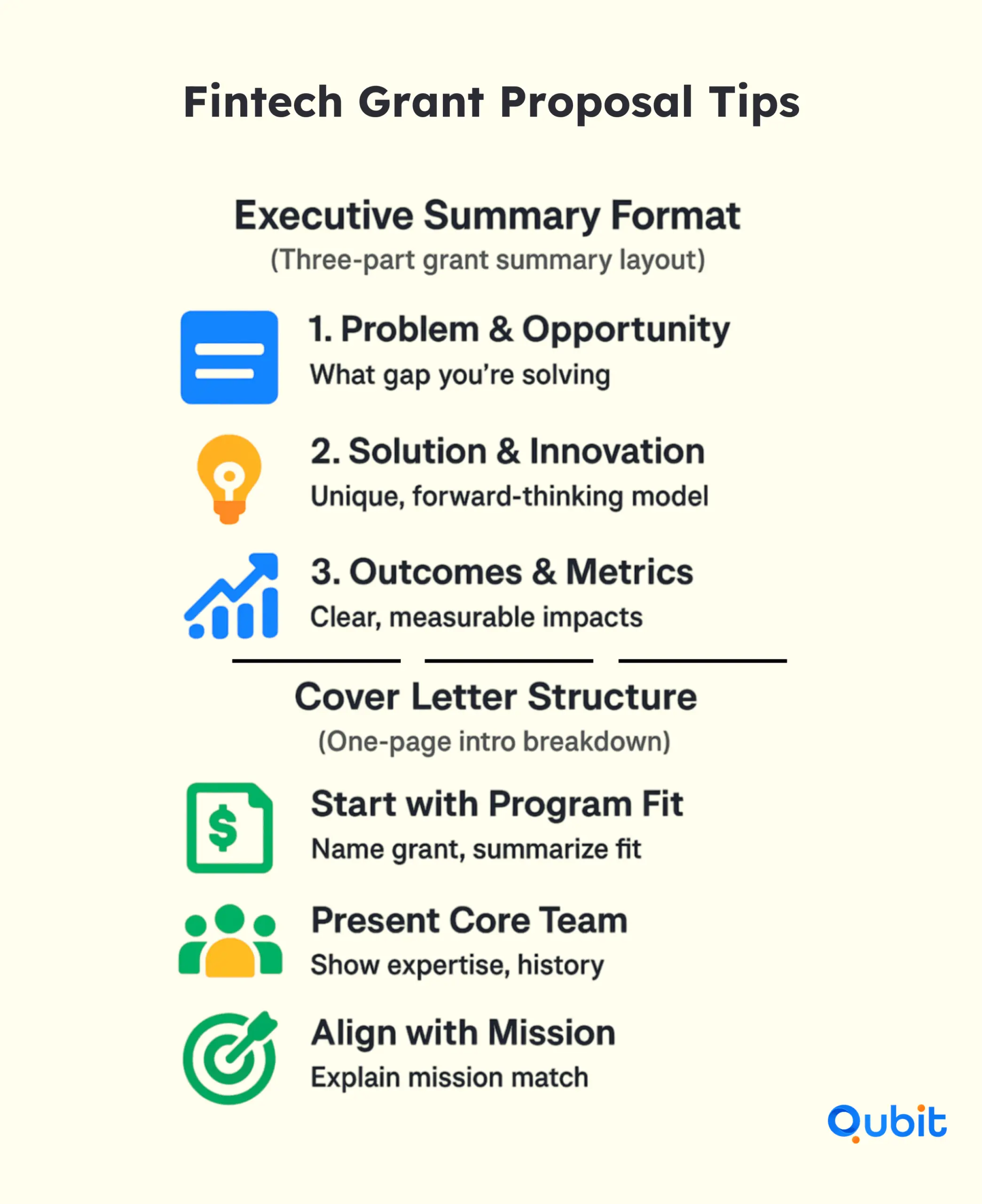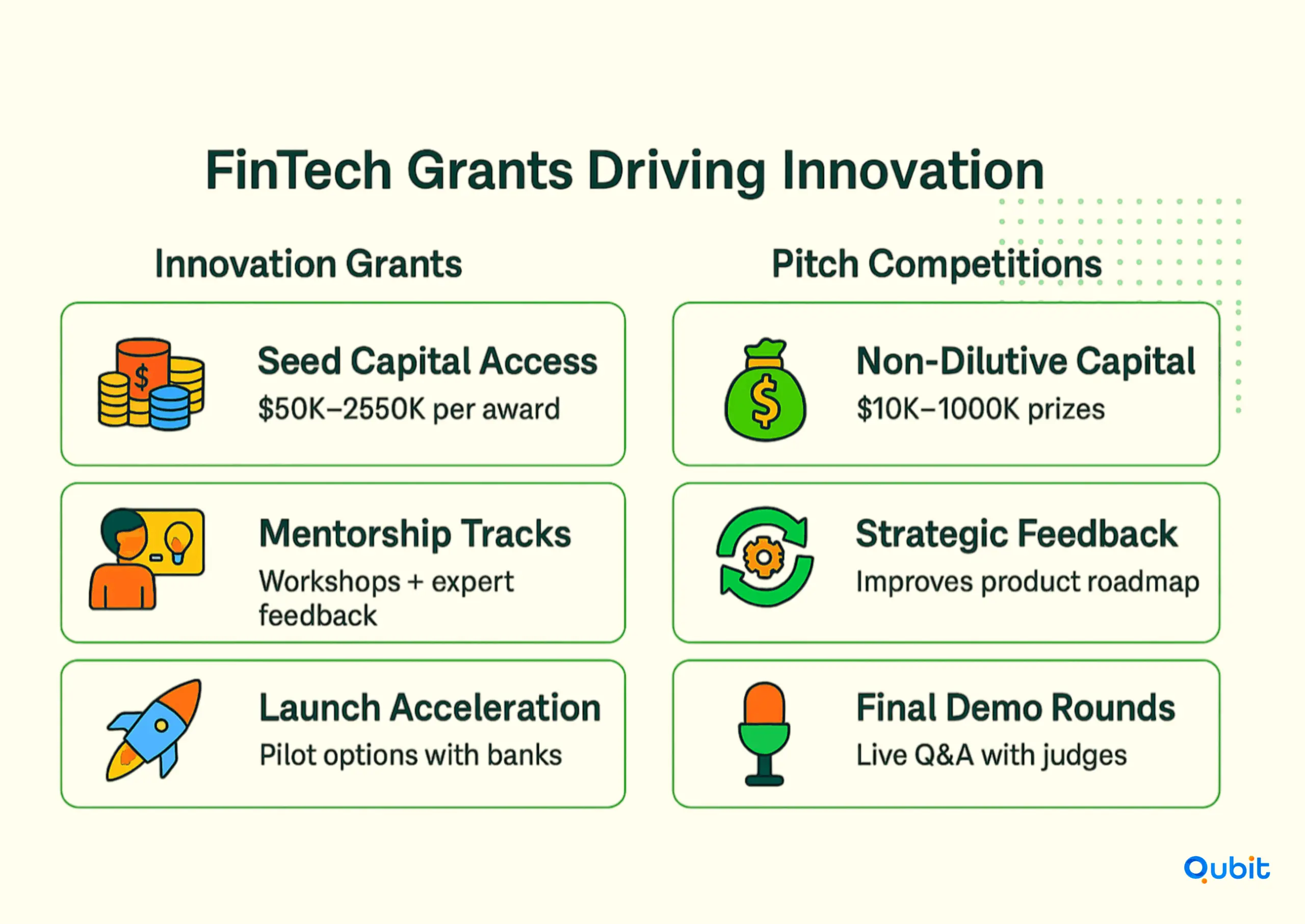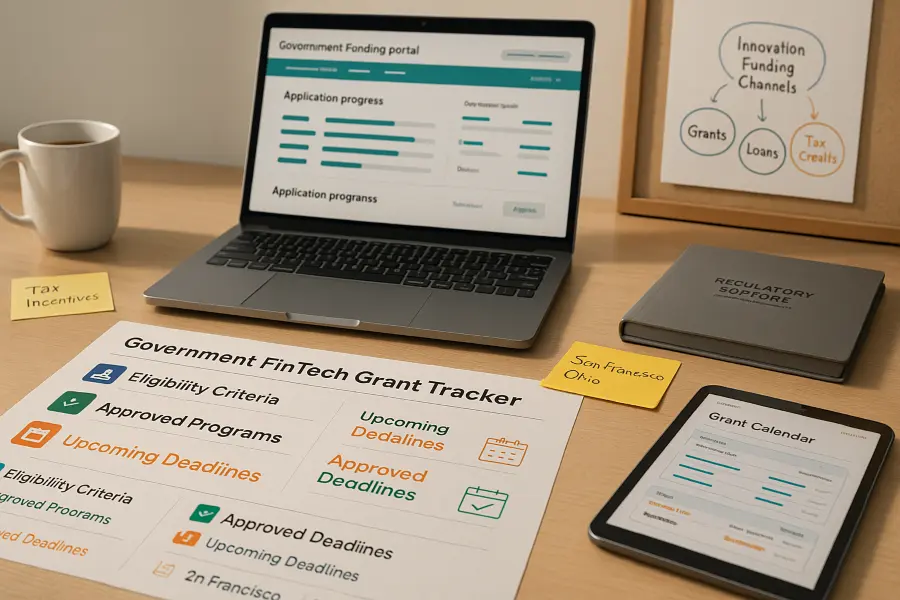What if you could access government incentives for FinTech worth billions in support that does not dilute equity? Your broader understanding of funding options is enriched by the insights found in fintech fundraising strategies and opportunities, which presents a comprehensive view of varied financial approaches.
This post explores FinTech grants and shares application tactics, alternative funding paths, and operational tips for sustainable growth. Let’s dive in.
FinTech Grant Proposal Overview and Introduction
This section will give you a clear and concise view of how you can draft your FinTech grant proposal before diving into the details.

Executive Summary
Begin with a concise snapshot of your proposal in two or three short paragraphs. Then follow with three numbered highlights:
- Problem and Opportunity
Describe the specific FinTech gap you will address and why it matters now. - Solution and Innovation
Explain what makes your approach unique and how it advances the state of the art. - Outcomes and Metrics
State the concrete results you will deliver, such as customer impact or cost savings, and how you will measure success.
Cover Letter
Write a one-page introduction addressed to the funding body:
- Start by naming the grant program and summarizing your project’s fit.
- Introduce your core team and highlight any prior achievements or relevant expertise.
- Explain in a sentence why your project aligns with the funder’s mission.
- Close with a courteous request for consideration and an offer to provide further details or meet for a discussion.
Why This Matters
A compelling executive summary and personalized cover letter set the tone for reviewers, ensuring your application stands out before they even reach the detailed sections that follow.
FinTech Grants and Subsidies for Innovation
FinTech grants channel public money toward startups developing digital finance solutions. Many founders tap non-dilutive funding to keep equity intact.
Government incentives for FinTech often target R&D hotspots and support market scaling with minimal cost to founders.
Several regional funds support proof-of-concept and pilot phases. Innovate UK grants advance AI payments. Bpifrance funds blockchain pilots under Innovation 2030. Public-private partnerships often multiply grant value and open mentorship channels.
Key Benefits and Challenges across grant programs reveal trade-offs founders should weigh.
- Reduced equity dilution: Grants are non-dilutive funding sources. Founders retain control while receiving capital.
- Focused innovation support: Programs align funding with technology milestones. This drives rapid iteration.
- Complex eligibility criteria: Application rules vary by region and sector. Teams need grant-writing expertise.
- Lengthy approval timelines: Review processes can take months. Delays risk stalling product roadmaps.
A real-world scenario illustrates impact. A UK startup in FCA Sandbox Participants used a £200K grant to refine its trading algorithm. Highlight the scale of support by noting EU allocated €100 million for AI/Blockchain Investment Fund.
Mastering Grant Application Strategies for FinTech Success
Securing public funding for FinTech means matching your project to the right grant program and showing you can deliver. In the U.S., the Small Business Innovation Research (SBIR) program’s Phase I awards up to $256 K for proof-of-concept work. In the U.K., Innovate UK’s Smart Grants distribute around £25 million each year to disruptive innovations, past rounds have seen projects netting up to £500 K each for collaborative R&D in fintech and insurtech sectors.
1. Nail Clarity, Feasibility & Alignment
Why it matters: Grant panels score you on how clearly you map milestones to outcomes and how tightly your goals align with their mission.
- Clarity: Break your proposal into 3–5 crisp objectives (“Develop API for 1,000 daily transactions with <50 ms latency”).
- Feasibility: Show a Gantt chart of technical milestones (prototype → pilot → scale) with resource estimates.
- Alignment: If you’re chasing Innovate UK’s “Next Generation Professional & Financial Services” fund, explain how you’ll improve payment efficiency for 2.5 million daily transactions handled by the Department for Work and Pensions.
2. Use FIT to Frame Your Story
Frame every section around these five scoring pillars:
- Fit: Demonstrate eligibility (e.g., U.K. registered SME with <500 employees).
- Innovation: Highlight a unique feature (“first AI-driven credit scoring for sub-prime rural users”).
- Impact: Quantify benefits—e.g., pilot with 500 unbanked customers, reducing remittance fees by 30%.
- Feasibility: List your tech stack, team roles, risk-mitigation plans.
- Team: Brief bios showing prior grants or relevant exits (“CTO developed a payments platform used by 10+ banks”).
3. Build Feedback Loops & Version Control
Before hitting “Submit,” run at least two review cycles:
- Internal peer review (rotate reviewers across product, compliance, finance).
- External expert check (academic or industry mentor).
Use a version-control tool (Git or Google Docs’ version history) so you can trace changes back to reviewer comments—just like engineers track code commits.
4. Follow a Rock-Solid Checklist
- Formatting: Stick to page limits, font requirements, and template headings exactly.
- Crosswalk: Create a two-column table mapping each proposal section to the funder’s scoring criteria.
- Budget narrative: Tie every budget line (“£50 K cloud costs”) to a section in your workplan (“Section 2, Milestone 3”).
- Deadlines & Eligibility: Note submission windows—e.g., Innovate UK Smart Grants open next on September 15, 2025; check that you have audited accounts and <25% non-grant revenue.
- Proofread: Run both spell-check and a final read-aloud pass to catch jargon or inconsistencies.
With this approach, grounded in actual grant schemes, crisp objectives, and disciplined review, you’ll transform a generic how-to into a winning playbook.
Diverse Types of FinTech Grants Driving Innovation
FinTech grants unlock capital for startups building digital finance tools. They span innovation awards, pitch contests, training funds, and market expansion subsidies.

Cutting-Edge Innovation Grants for FinTech
Innovation grants back startups that develop cutting-edge digital finance solutions. They often include mentorship, investor introductions, and dedicated technical support. Programs may focus on AI, blockchain, or advanced payment systems.
A small firm that won one grant accessed private investor sessions. The team refined its risk model with expert feedback. Mentor-led workshops accelerated product launches by two months. Grant terms vary from $50K to $250K in seed funding. Winners gain pilot project options with partner financial institutions. Reports show 80% of awardees secure follow-on funding within six months.
Revitalizing Pitch Competitions for Grant Success
Pitch competitions let founders present ideas to expert panels. Prizes range from $10K to $100K in non-dilutive capital. They also deliver feedback that shapes product roadmaps. Competitors network with mentors and potential co-founders.
A regional contest awarded $50K to a fraud detection startup. Winning boosted its public profile and led to three pilot offers. Signup deadlines appear quarterly or semiannually. High applicant volume increases selection pressure on founders. Active preparation helps founders refine pitches.
Judges score teams based on innovation, market fit, and technical depth. Final round events often include live demos and Q&A sessions. Success in these contests draws media attention and strategic partners.
Specialized Training Grants to Enhance FinTech Skills
Training grants underwrite skill development programs for FinTech teams. They grant access to certification courses, workshops, and online modules. Recipients often cover blockchain security, compliance frameworks, or API integrations. Programs promote workforce diversity by supporting underrepresented founders.
Hands-on workshops: Grant recipients complete live sessions.
They apply new skills in real projects:
- Accessible funding: Small teams enroll in expert courses without budget strain. This reduces recruitment and training costs.
- Selective eligibility: Grant criteria may exclude advanced startups. This limits access for maturing firms.
- Fixed curriculum: Course topics follow set schedules. This may not match urgent skills gaps.
- Teams measure progress through post-course assessments and peer reviews.
Market Expansion Grants for Global FinTech Growth
Market expansion grants fund startups aiming to enter new regions. They combine funding with regulatory guidance and local partnerships. Grant sizes range from $100K to $500K depending on scale needs. Recipients access legal support for cross-border compliance.
Programs often connect teams with local banks and regulators. A payments startup used a $200K award to launch in Europe. The grant covered licensing fees and translations. Local advisors refined its pricing model for varied markets. Varying rules across jurisdictions increase administrative overhead. Teams may need to secure matching funds to qualify. Success in new markets can drive revenue growth and brand recognition.
Navigating the FinTech Startup Funding Ecosystem
FinTech startup funding encompasses capital flows for software-driven financial ventures. These funds include private investments, grants, and loans.
This section shows how government grants integrate with equity and debt options.
In 2023, global FinTech startup funding topped $50 billion across 1,800 deals. Venture capital accounted for nearly 70%, while grants covered niche compliance and early R&D costs.
Credit lines and invoice factoring also supplement startup funding needs for revenue-generating ventures.
- Equity Rounds: investors exchange cash for shares, fueling rapid scaling without repayments.
- Venture Debt: loans provide capital with interest obligations and no new equity issuance.
- Government Grants: non-dilutive funding that underwrites R&D, licensing, or compliance tasks.
Founders can layer grants alongside private capital to stretch each dollar.
Strategic combinations reduce dilution and demonstrate diversified funding strategies to investors.
- Map milestones: align grant deliverables with investor expectations to hit key triggers.
- Phase funding: use grants to pilot features before seeking equity investments.
- Track metrics: showcase grant-funded progress in pitch decks to build credibility.
A broader perspective on financing is evident in alternative funding for fintech, offering you examples of diverse funding mechanisms alongside government grants. Continuous efficiency prepares teams for hybrid funding paths.
Conclusion
You now know how to tap grant programs, sharpen applications and find complementary funding. This pack of strategies can raise your chances and fuel your FinTech growth. Proper funding prep and solid operational planning set you apart and boost success. Now you can pick the right grants, shape your narrative and secure complementary sources.
Enhance your pitch and secure funding with our Pitch Deck Creation service, designed to make your FinTech innovation shine. Reach out to us today.
Key Takeaways
- Bootstrapping, angel investments, VC funding, and corporate partnerships enrich the ecosystem and spread risk.
- Clear, feasible proposals that align with grant criteria improve your application success.
- Fractional COOs and strategic board leadership drive sustainable growth and strengthen operations.
- Government grants unlock non dilutive capital for FinTech innovation and reduce equity dilution.
- Innovation grants, pitch competitions, and training grants expand your financing toolkit.


 Back
Back



